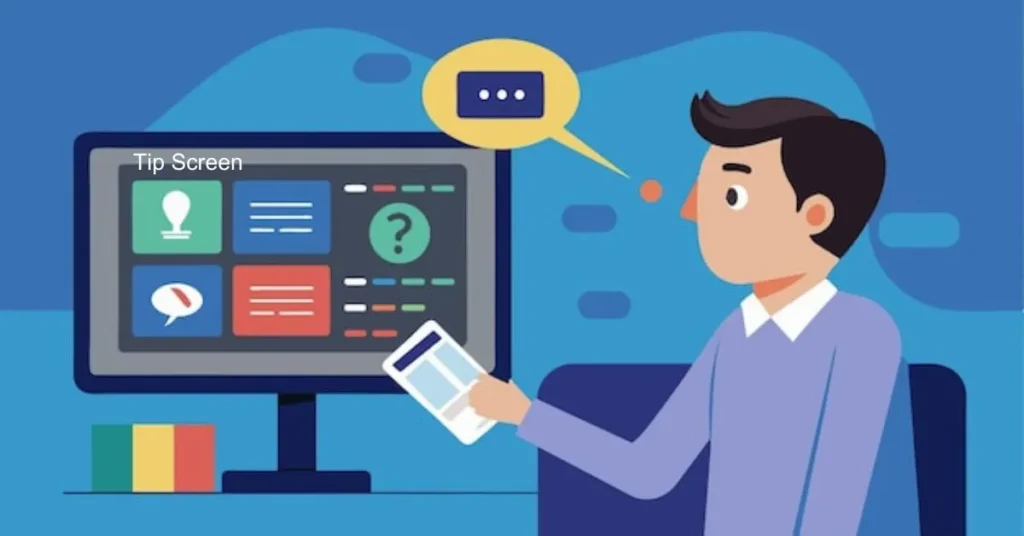In today’s fast-paced service industry, ensuring a seamless and rewarding experience for both customers and employees is crucial. One tool that has significantly contributed to this goal is the tip screen. But what exactly is a tip screen, and why is it becoming a staple in the service sector? Let’s dive into the world of tip screens and explore their significance.
Understanding the Basics of Tip Screens
Definition and Purpose
A tip screen is a digital interface, typically integrated with a point-of-sale (POS) system, that allows customers to add a gratuity to their purchase electronically. The primary purpose of a tip screen is to simplify the tipping process, making it more accessible and efficient for both customers and staff.
Common Types of Tip Screens
Tip screens come in various forms, including touchscreens at payment terminals, mobile app interfaces, and even interactive tablets. Each type aims to provide a user-friendly experience, encouraging customers to leave a tip.
The Evolution of Tip Screens
Historical Background
The concept of tipping has been around for centuries, but the method of collecting tips has evolved dramatically. From cash tips left on tables to the modern-day digital tip screens, the journey has been fascinating.
Technological Advancements
With the advent of digital technology, tip screens have become more sophisticated. Features such as preset tip amounts, custom tipping options, and seamless integration with payment systems have revolutionized the way tips are collected and distributed.
Benefits of Implementing Tip Screens
Enhancing Customer Experience
Tip screens streamline the tipping process, making it quick and hassle-free. Customers appreciate the convenience of adding a tip with just a few taps.
Boosting Employee Morale
When employees receive tips more consistently, their morale and job satisfaction improve. Tip screens ensure that tips are not forgotten and are distributed fairly.
Increasing Revenue
Businesses can see an increase in overall revenue as tip screens often lead to higher tip amounts. This can be attributed to the ease of use and the subtle encouragement to tip provided by the digital interface.
Challenges in Using Tip Screens
Potential Customer Discomfort
Some customers may feel pressured to leave a tip when presented with a tip screen. It’s essential to design the interface in a way that feels optional rather than obligatory.
Technical Issues
Like any technology, tip screens can experience glitches or downtime. Regular maintenance and support are crucial to keep the system running smoothly.
Ensuring Fair Distribution of Tips
Ensuring that tips are distributed fairly among staff can be challenging. Clear policies and transparent systems are necessary to maintain fairness and trust.
Designing an Effective Tip Screen
User-Friendly Interface
The success of a tip screen largely depends on its interface. It should be intuitive, easy to navigate, and visually appealing.
Customization Options
Allowing businesses to customize the tip screen to match their branding and preferences can enhance the customer experience and increase tip amounts.
Security Measures
Implementing robust security measures is crucial to protect customer information and prevent fraudulent activities.
Integrating Tip Screens with POS Systems
Compatibility Considerations
Ensure that the tip screen is compatible with existing POS systems to avoid integration issues and additional costs.
Seamless Transactions
A smooth and quick transaction process is vital. Tip screens should not slow down the payment process.
Data Tracking and Reporting
Effective tip screens offer data tracking and reporting features, allowing businesses to monitor tip trends and employee performance.
Best Practices for Tip Screen Usage
Educating Staff
Staff should be well-trained on how to use tip screens and explain their benefits to customers.
Encouraging Customer Participation
Friendly reminders and clear prompts on the screen can encourage customers to leave a tip without feeling pressured.
Regular Maintenance and Updates
Regular updates and maintenance are essential to keep the tip screen functioning optimally and secure from potential threats.
Case Studies: Successful Implementation of Tip Screens
Example 1: A Coffee Shop’s Experience
A local coffee shop integrated tip screens and saw a 30% increase in tips within the first month. The easy-to-use interface and preset tip options made a significant difference.
Example 2: A Fine Dining Restaurant’s Story
A high-end restaurant adopted tip screens and reported improved customer satisfaction and a noticeable boost in employee morale.
Customer Perception and Feedback
Gathering and Analyzing Feedback
Collecting customer feedback is essential to understand their experience with the tip screen. Surveys and direct feedback can provide valuable insights.
Adjusting Based on Customer Insights
Based on the feedback, businesses should be ready to make necessary adjustments to improve the tip screen experience continually.
Future Trends in Tip Screen Technology
Emerging Technologies
Innovations like AI and machine learning could further enhance the functionality and efficiency of tip screens.
Predictions for the Future
The future of tip screens looks promising, with potential advancements leading to even more streamlined and personalized tipping experiences.
Legal and Ethical Considerations
Compliance with Labor Laws
Ensure that the tip screen system complies with all relevant labor laws and regulations to avoid legal issues.
Transparency and Ethics
Transparency in how tips are distributed and ensuring ethical practices are vital to maintain trust among employees and customers.
Conclusion
Tip screens are revolutionizing the way tips are collected and distributed in the service industry. By enhancing customer experience, boosting employee morale, and increasing revenue, they offer significant benefits. However, it’s crucial to address challenges and implement best practices to maximize their potential. As technology continues to evolve, tip screens will likely become even more integral to the service industry.
FAQs About Tip Screens
What is the primary purpose of a tip screen?
The primary purpose of a tip screen is to simplify and streamline the tipping process, making it more convenient for customers and ensuring fair distribution among staff.
Are tip screens secure?
Yes, modern tip screens are equipped with robust security measures to protect customer information and prevent fraud.
Can businesses customize their tip screens?
Absolutely. Most tip screens offer customization options to align with the business’s branding and preferences.
Do tip screens increase tip amounts?
Many businesses report an increase in tip amounts after implementing tip screens due to their convenience and subtle encouragement features.
What should businesses consider when choosing a tip screen?
Businesses should consider compatibility with existing POS systems, user-friendly interface, security features, and customization options.







